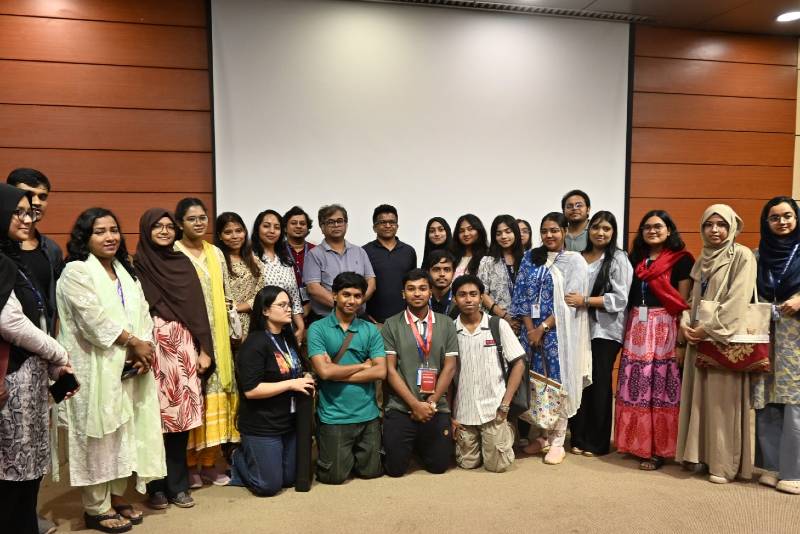Architecture Meets Cinematography: Rashed Explores Visual Storytelling at NSU

Dhaka, Bangladesh — Bangladeshi cinematographer Rashed Zanman delivered a compelling talk on the intricate relationship between architecture and film at North South University (NSU) on Thursday( September 25, 2025).
The event was organised by the Department of Architecture under the Kathon Lecture Series.
Rashed holds an academic background in Architecture from Middle East Technical University (METU), Turkey, and in Cinematography from the University of California, Los Angeles (UCLA Extension), USA.
He began his career in Hollywood as a camera assistant and lighting crew member before establishing himself in the Bangladeshi film industry with his National Film Award-winning work in Aynabaji (2016). His cinematographic contribution to Utshob further demonstrated his creative range and ability to experiment with visual language.
In his lecture, Rashed raised the thought-provoking question: “What is the relationship between architecture and film?” He explained that architecture plays a crucial role in shaping diversity and spatial perception in cinema. Through the interplay of space and light, and the transition from static to movement, films portray the flow of human perception. He described filmmaking as a process of “image construction”, drawing strong parallels to the architectural process of transforming imagination and planning into physical spaces.
Rashed emphasised that his architectural training taught him two essential lessons:
To imagine where nothing exists – an indispensable skill for both architects and cinematographers.
Discipline over intelligence – underscoring that consistent discipline is what sustains a career in any creative field.
He further reflected on the visual literacy of today’s audiences, noting that we now “read” images more than text, making visual storytelling more significant than ever.
At the same time, he highlighted key differences between the two disciplines:
“In cinematography, visual intention evolves more rapidly than in architecture. Cinematographers often work under budget constraints, time limitations, and unexpected challenges.
While architectural visions are usually fully formed before execution, a film’s vision continues to evolve until the final output.”
Rashed also referenced the Polish cinematographer Witold Sobociński, whose advice deeply influenced him: “Make pictures, don’t make photographs.” He elaborated that while a photograph conveys information, a picture integrates story, visuals, and sound. He broke down visual structure into three key components: look, feel, and texture—all of which are shaped by narrative and genre.
Exploring the philosophical dimensions of visual storytelling, Rashed asserted: “Space is the most important and motivational element, and time is the change of light.” He emphasised how life stories unfold through the journey of space and light, tying back to his architectural roots.
Mr Rashed’s lecture marked a milestone in the Kathon Lecture Series, a knowledge-sharing hub of the Department of Architecture at NSU.
The event concluded with the presentation of an NSU Crest to Rashed by Department Chair Shahriar Iqbal Raj. With gratitude, Rashed gifted a beautiful street photograph of Old Dhaka from his collection to the Department of Architecture.



